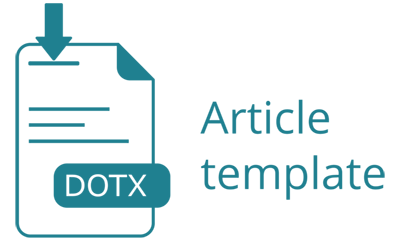Characterization of Secondary Metabolites and Cytotoxic Assay of Haliclona sp. Sponge Against T47D Breast Cancer Cells
DOI:
https://doi.org/10.15575/ak.v10i1.20334Keywords:
Anticancer, secondary metabolites, cytotoxic, Haliclona sp. sponge, T47D cellsAbstract
References
Maushmi S. Kumar and Asim K. Pal, “A review of bioactive compounds from marine organisms with special mention on the potential of marine sponges in pharmacological applicationsâ€, J. Mar. Biol. Ass. India, 58(1), 2016.
S. Sujatha, G.Prakash Vincent, and M. Jobi Dhas, “Marine sponge and its potential bioactive spectrum against CSF-affected bacterial organismsâ€, The Pharma Innovation Journal, 3(6), 81-86, 2014.
S.B. Helber, D.J.J. Hoeijmakers, C.A. Muhando, S. Rohde, P.J. Schupp, “Sponge chemical defenses are a possible mechanism for increasing sponge abundance on reefs in Zanzibarâ€, PLoS ONE, 13(6), e0197617, 2018, doi: 10.1371/journal.pone.019761.
A.C. Abraham, D.J. Gochfeld, K. Macartney, A. Mellor, M.P. Lesser, and M. Slattery, “Biochemical variability in sponges across the Caribbean basinâ€, Invertebrate Biology, 140(3), e12341, 2021, doi: 10.1111/ivb.12341.
C. Calcabrini, E. Catanzaro, A. Bishayee, E. Turrini, and C. Fimognari. “Marine sponge natural products with anticancer potential: An updated review. Mar. Drugs, 15(10), 310, 2017, doi: 10.3390/md15100310.
H. Zhang, M. Dong, J. Chen, H. Wang, K. Tenney, and P. Crews, “Review: bioactive secondary metabolites from the marine sponge genus agelasâ€, Mar. Drugs, 15(11), 351, 2017, doi: 10.3390/md15110351.
A.M Elissawy, E.S. Dehkordi, N. Mehdinezhad, M.L. Ashour, P.M. Pour, “Cytotoxic alkaloids derived from marine sponges: A comprehensive reviewâ€, Biomolecules, 11(2), 258, 2021, doi: 10.3390/biom11020258.
I.M.D. Swantara, W.S. Rita, and A. Hernindya, "Identifikasi isolat antikanker spons Hyrtios erecta", Indonesian Journal of Cancer, 10(4), 123-129, 2016, doi: 10.33371/ijoc.v10i4.456.
M.R. Kurniawan, A. Sapar, and A.B. Aritonang, "Úji toksisitas dan uji fitokimia spons Haliclona sp. asal pulau lemukutan kabupaten bengkayang kalimantan barat", Jurnal Kimia Khatulistiwa, 9(1), 2303-1077, 2021.
M. Sangi, M.R.J. Runtuwene, H.E.I. Simbala dan V.M.A. Makang, "Analisis fitokimia tumbuhan obat di kabupaten minahasa utara", Chemistry Progress, 1, 47-53, 2008.
Suciati, and L. Arifianti. “In vitro anticancer activity of marine sponges against T47D and hela cell linesâ€. Dhaka Univ. J. Pharm. Sci., 19(1), 25-28, 2020.
W.M. Alarif, A. Abdel-Lateff, S.S. Al-Lihaibi, S.E.N. Ayyad, and F.A. Badria, “A new cytotoxic brominated acetylenic hydrocarbon from the marine sponge Haliclona sp. with a selective effect against human breast cancerâ€, Z. Naturforsch C J Biosci, 68(1-2), 70 – 75 2013.
J.P. Houghton and A. Raman, "Laboratory Handbook for The Fractionation of Natural Extracts", ITP, London, 102-105, 1998.
I.G.I.P. Putra, “Uji aktivitas antikanker ekstrak etanol biji srikaya (Annona squamosa L.) terhadap beberapa sel kanker manusia secara in vitroâ€, Surabaya, Universitas Airlangga, 2015.
L. Puspitasari, D.A. Swastini, and C.I.S. Arisanti, “Skrining fitokimia ekstrak etanol 95% kulit buah manggis (Gracinia mangostana L.)â€, Jurnal Farmasi Udayana, 2(3), 1-5, 2013.
R. Setyawaty, R. Aptuning A.B. Dewanto, “Preliminary studies on the content of phytochemical compounds on skin of salak fruit (salaccazalacca)â€, Pharmaceutical Journal of Indonesia, 6(1), 1-6, 2020, doi: 10.21776/ub.pji.2020.006.01.1.
N. Kancherla, A. Dhakshinamooth, K. Chitra, and R.B. Komaram, “Preliminary analysis of phytoconstituents and evaluation of anthelminthic property of Cayratia auriculata (in vitro)â€, MAEDICA – a Journal of Clinical Medicine, 14(4), 350-356, 2019, doi: 10.26574/maedica.2019.14.4.350.
T. Saptawati, E. Dayanti, F.A. Rachma, and Ovikariani, “Phytochemical screening of ethanol extract of trembesi fruit seeds (Samanea saman)â€, Science and Community Pharmacy Journal, 1(2), 69-77, 2022.
J.P. Sinurat, V. Krisdianilo, R.M.br. Karo, and R. Berutu. “Analysis of total terpenoids from Maniltoa Grandiflora (A. Gray) scheff leaves using TLC and HPLC methodsâ€, Stannum: Jurnal Sains dan terapan Kimia, 2(2), 40-44, 2020, doi: 10.33019/jstk.v2i2.1976.
R. Mutiah, A.L. Inayatin, R. Annisa, Y.Y.A. Indrawijaya, and A. Listiyana, “Inhibition of cell cycle and induction of apoptosis y ethanol leaves extract of Chrysanthemum cinerariifolium (Trev.) In T47D breast cancer cellsâ€, Indonesian Journal of Pharmacy, 31(1), 1–10, 2020, doi: 10.14499/indonesianjpharm31iss1pp1.
D. Handayani, W. Rasyid, Rustini, E.N. Zainudin, and T. Hertiani, “Cytotoxic activity screening of fungal extracts derived from the west sumatran marine sponge Haliclona fascigera to several human cell lines: hela, WiDr, T47D, and Veroâ€, Journal of Applied Pharmaceutical Science, 8(01), 055-058, 2018, doi: 10.7324/JAPS.2018.8109.
W. Woradulayapinij, A. Pothiluk, T. Nualsanit, T. Yimsoo, W. Yingmema, P. Rojanapanthu, Y. Hong, S.J. Baek, and W. Treesuppharat, “Acute oral toxicity of damnacanthal and its anticancer activity against colorectal tumorigenesisâ€, Toxicology Reports, 9, 1968-1976, 2022, doi: 10.1016/j.toxrep.2022.10.015.
S. Safarpour, S. Safarpour, M. Pirzadeh, A. A. Moghadamnia, A. Ebrahimpour, F. Shirafkan, R. Mansoori, S. Kazemi, and M. Hosseini, “Colchicine ameliorates 5-fluorouracil-induced cardiotoxicity in ratsâ€, Oxidative Medicine and Cellular Longevity, 2022, doi: 10.1155/2022/6194532.
S. Susilowati, A. Claresa, and I. Arifin, “Uji sitotoksik fraksi n-heksana ekstrak etanol herba alfaalfa (Medicago Sativa L.) pada sel T47D dan sel HeLa serta identifikasi kandungan senyawa kimianyaâ€, Media Farmasi Indonesia, 9(2), 2012, doi: 10.31942/jiffk.v9i2.858.
S. Moeljopawiro, M.R. Anggelia D., B. Ayuningtyas, Y. Widaryanti, Sari, and I.M. Budi, “Pengaruh sari buah merah (Pandanus conoideus Lam.) terhadap pertumbuhan sel kanker payudara dan sel kanker usus besarâ€, Berkala Ilmiah Biologi, 6(2), 121-130, 2007.
Downloads
Published
How to Cite
Issue
Section
Citation Check
License
Authors who publish with this journal agree to the following terms:
- Authors retain copyright and grant the journal right of first publication with the work simultaneously licensed under a Creative Commons Attribution 4.0 International License that allows others to share the work with an acknowledgment of the work's authorship and initial publication in this journal.
- Authors are able to enter into separate, additional contractual arrangements for the non-exclusive distribution of the journal's published version of the work (e.g., post it to an institutional repository or publish it in a book), with an acknowledgment of its initial publication in this journal.
- Authors are permitted and encouraged to post their work online (e.g., in institutional repositories or on their website) prior to and during the submission process, as it can lead to productive exchanges, as well as earlier and greater citation of published work (See The Effect of Open Access).






